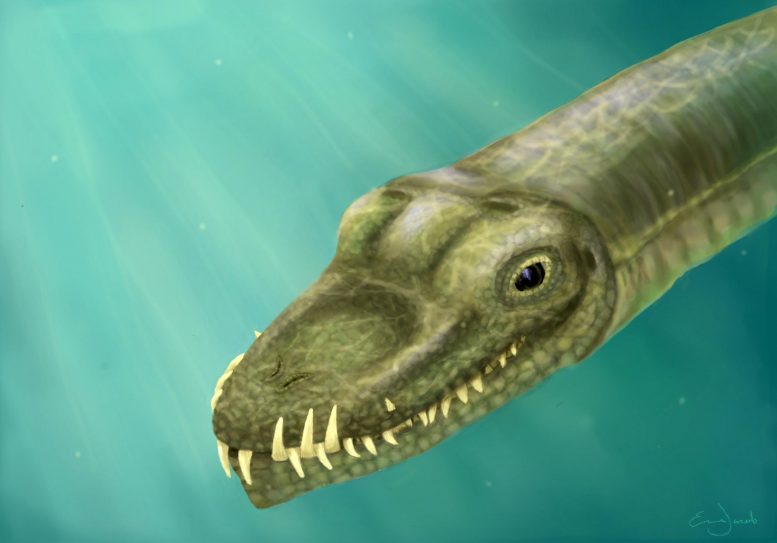A fossil called Tanystropheus was first described in 1852. Scientists did not know what it truly was and they were puzzled and tried to look for answers about the animal ever since.
At first, the paleontologists thought it was a flying pterosaur, like that of a pterodactyl because of its long, hollow bones and its phalanges in the finger supported the wing. Later on, they realized those were actually elongated neck bones, and that it was a 20-foot-long reptile with a 10-foot neck, which was three times as long as its torso.

The scientists used CT scan on the fossils’ crushed skulls and digitally reassembled them. They examined the growth ring in boned to determine whether it was a separate species from the little Tanystropheus that lives alongside each other without competing because they hunted for different preys.
“I’ve been studying Tanystropheus for over thirty years, so it’s extremely satisfying to see these creatures demystified,” Oliver Rieppel, paleontologist at the Field Museum in Chicago and one of the authors of newly published paper in Current Biology, told Scitech Daily.

According to their new discovery, the Tanystropheus lived 242 million years ago, during the middle Triassic.
“Tanystropheus looked like a stubby crocodile with a very, very long neck,” Rieppel said.
Stephan Spiekman, the paper’s lead author and researcher at the University of Zurich, took CT scans and fossil slabs to generate 3D images of the bone fragments.

“The power of CT scanning allows us to see details that are otherwise impossible to observe in fossils,” Spiekman said. “From a strongly crushed skull we have been able to reconstruct an almost complete 3D skull, revealing crucial morphological details.”
The skulls showed its nostrils on top of the snout like a crocodile’s, which suggested the Tanystropheus lived in water. It may have come to land to lay eggs, but it stayed in ocean. “That neck doesn’t make sense in a terrestrial environment. [It’s] just an awkward structure to carry around,” Rieppel said.
“We looked at cross sections of bones from the small type and were very excited to find many growth rings. This tells us that these animals were mature,” added Torsten Scheyer, the study’s senior author and researcher at University of Zurich.
“It’s proven now that there are two species,” explained Rieppel. The researchers named the larger one Tanystropheus hydroides after the long-necked hydras in Greek mythology, while the small form was named Tanystropheus longobardicus, which is the original name of the species.
You might want to read:
– Dinosaur fossil show they got cancer, too
– Giant 70M-year-old fossil of a fish found in Argentina
– Second tooth fossil of Megalodon discovered in Bohol






